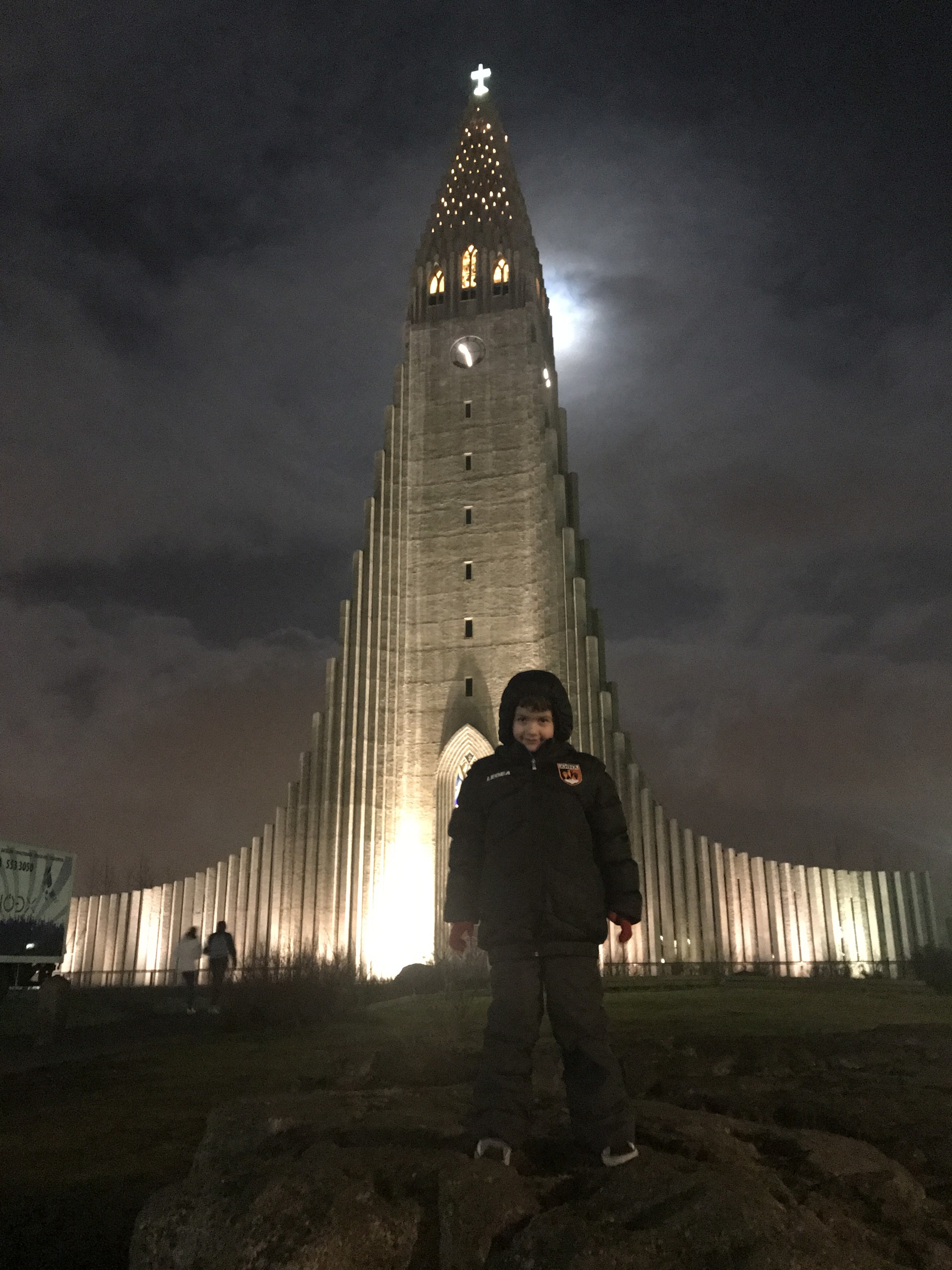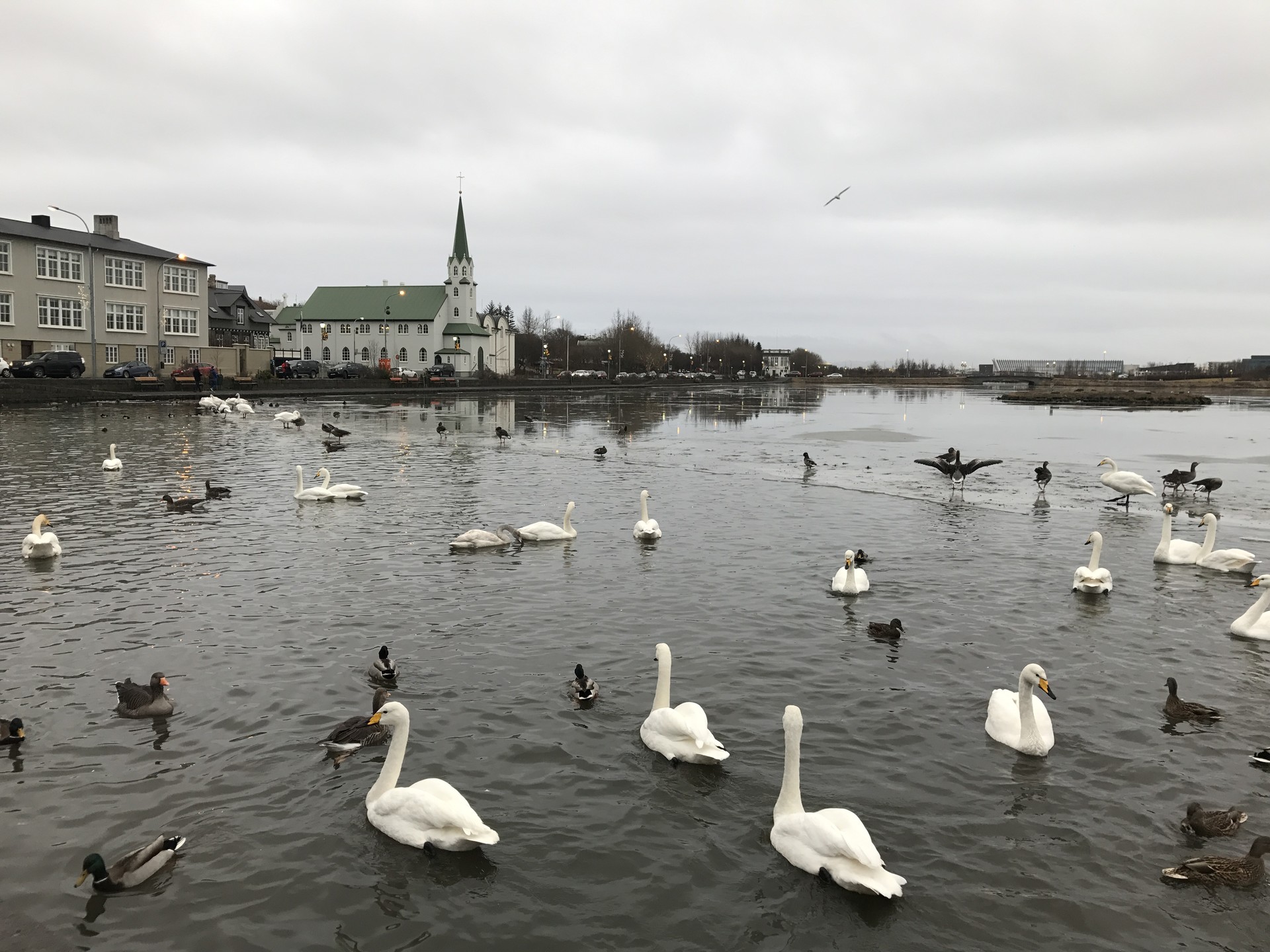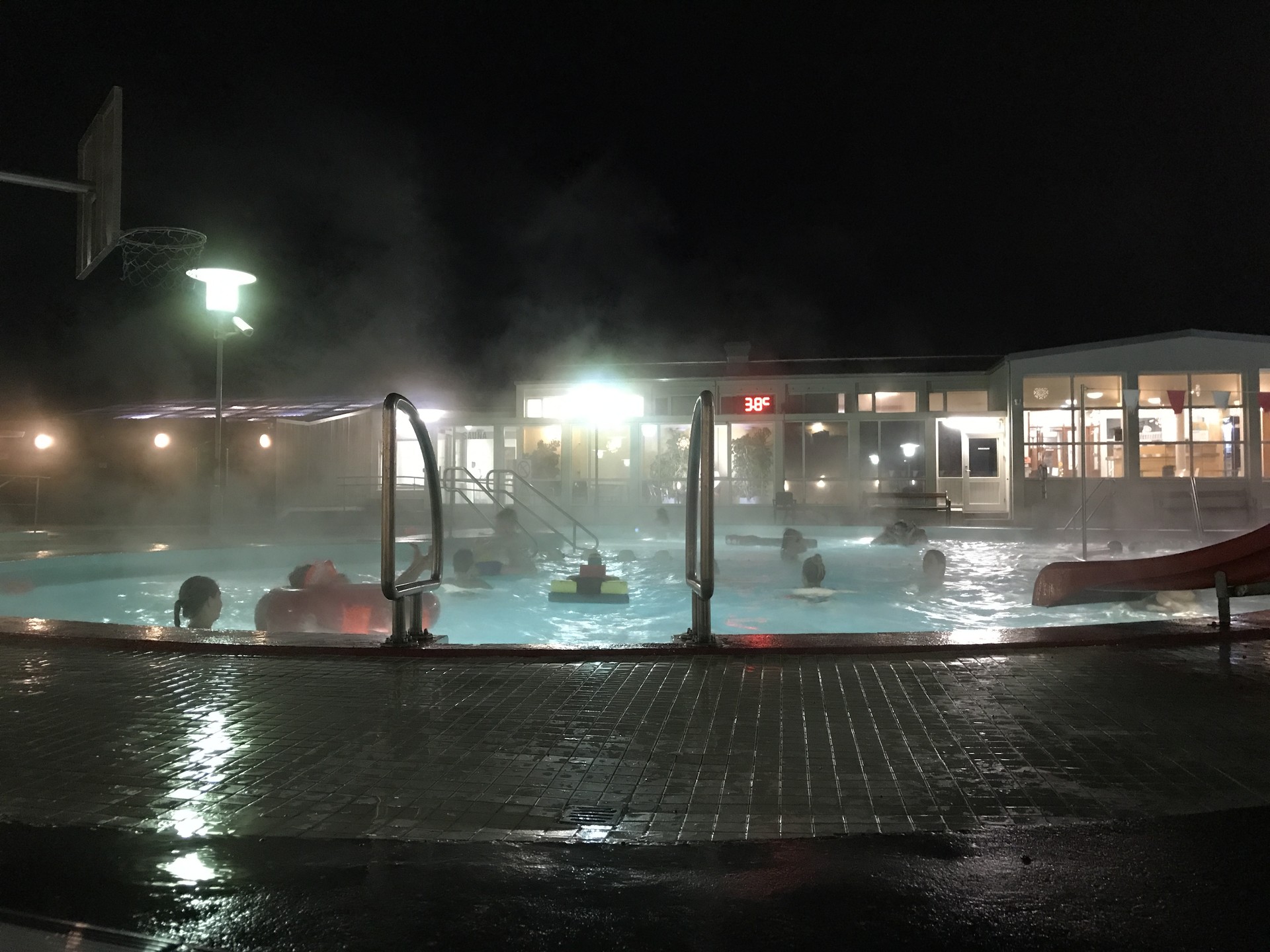Tour of Iceland
Hi everyone!
In this article I'll be talking to you about Iceland and its capital city, Reykjavík!
I got to visit the so-called ‘land of fire and ice’ from 26th November until 4th December 2017, with my five-year-old son Pietro. I've wanted to visit Iceland for a really long time, but it seemed like an adventure that was too expensive, and I wasn't able to face it alone, as I usually do when travelling. I've always kept an eye on plane ticket prices to Reykjavík, until one day I noticed that the low-cost company Wizzair had some trips to Iceland. And so, I tested out hundreds of different itineraries, until I found the right one:
- On 28th November we left Perugia and took the train to my sister in Monza, which cost us 50 euros;
- On 23rd November we headed to Orio al Serio Airport (Bergamo) for Riga, the capital of Latvia, with a flight from the low-cost airline Ryanair, which cost 18 euros per head;
- On 26th November, after having spent three nights in Riga, we left for Reyktavík, with a cheap Wizzair flight, I paid 15 euros per head;
- On 4th December, after having travelled around Iceland by car, we left for Budapest, capital of Hungary, with a Wizzair flight of 40 euros per head;
- On 7th Deecember, after spending three nights in Budapest, we headed to Rome airport (Ciampino), with a Ryanair flight of 20 euros per head. Then we took the train back to Perugia from Rome (Termini), tickets were 13 euros and 90 euros.
For the entire trip, I only spent 1, 500 euros, for the both of us, everything included: flights, trains, bus, rental bus, petrol, hotels, spa entrance, cigarettes, food, toys for my son, etc. Obviously, I took a few things for us to eat, like: biscuits, chocolate, crisps, gum, all things taken from my bar and I didn't take that into consideration in this account, but all of that would come to around 20 euros. I've attached a link where you'll find a blog written by me, with the details of each single day of our long trip.
But now, let's talk about... Reykjavík, the capital and most important city in Iceland. The entire island of Iceland has around 300 thousand inhabitants and of those, 150 thousand reside in Reykjavík. Reykjavík is the political, cultural and economic heart of Iceland. Thousands of universities, museums, theatres, cinemas and other main services that any other European capital cities would offer can be found in Reykjavík. Reykjavík is said to have had the first permanent human settlement in Iceland, by Ingolfur Arnarson, around the year 870. He also chose the name for the new city, which translated, means " Smoky Bay ". In these areas, full of volcanoes, fumaroles, glaciers, rivers, and waterfalls, urban development only began around the end of the 1700s.
For those who don't know, Rekyjavík is located in the south-west of Iceland, in the Gulf of Faxaflói and it's bordered by the Atlantic Ocean. Furthermore, in the city centre, there's a very lovely lake, called Lake Tjörnin.
Due to its extreme closeness to the Arctic Circle the sun never completely sets during the summer months, more precisely, at the end of May to half-way through July. Instead, the sun rests under the horizon and creates a beautiful twilight. During the winter, the complete opposite occurs, meaning, the sun slowly rises above the horizon and for not more than four hours a day; so it's almost always dark!
When we were there, the sun rose at 11:00 am and set at 3:30 pm, so it's good to organise a perfected itinerary to avoid wasting the few hours of light available each day.
What's the time difference between Rome and Reykjavík?
The time difference between Iceland and Italy is one hour.
What is the weather like in Reykjavik?
Reykjavík has a sub-polar oceanic climate, cold and cloudy for most of the year. Sunny periods are very rare!
Its position makes it subject to strong polar wind; there are many storms and blizzards especially in the winter. During this time of the year, the temperature can go down to -20°C but this is quite rare. The last time this happened was 31st January 1971! The lowest temperature ever recorded isn't excessive: -25°C, and dates back to 21st January 1918. Normally the temperature goes down to -10°C.
The average temperature in Reykjavík is around 0°C. I was in the capital on 4th December 2017 and it was 4°C. The summers are rather fresh, with an average temperature which fluctuates between 10°C - 15°C and very rarely it can reach 20°C. There isn't much humidity although it rains 150 days of the year.
When is the best time to go on holiday to Reykjavík?
It depends on what you like! I personally decided to go right in the middle of winter, so that I'd have the best chance of seeing the aurora borealewhich is something I've already tried to do several times in vain... so it was one of the main reasons for my trip this time. The only downside to travelling in the winter is the few hours of light. However, there are also advantages of visiting during the winter which should be taken into consideration:
- Everything costs much less... almost half price (flights, car rental, hotels, attractions, etc. )!
- You don't have to queue in long entry lines at the spas!
How much time do you need to visit Reykjavík?
First of all, travelling to Iceland just to visit Reykjavík makes no sense, because in Reykjavík itself there isn't much to do! Therefore, if you have a weekend available, change your goal! Going to Reykjavík means going for at least 10 days and renting a car in order to travel along Ring Road, the main road which sails along the entire coast of Iceland, the most beautiful road I have ever seen in my life!
Here you can find the article I wrote talking about this magnificent road. I advise you to take a look at it!
Which currency is used in Reykjavík?
In Reykjavík the Icelandic Króna (ISK) is used. However, it must be said that the value of the Króna has suffered badly from inflation and the 2008 economic crisis, causing it to devalue more and more against the euro.
How much is the cost of living in Reykjavík?
In Iceland, the cost of living is generally quite high. During summer, as I pointed out before, everything is more expensive! I'll give you some examples:
In restaurants and bars:
- A burger and fries costs around 2000 ISK, which is approximately 16 euros;
- a bottle of wine costs around 5000 ISK, which is approximately 40 euros;
- A beer costs around 1000 ISK, which is approximately 8 euros;
- An entry ticket to thermal pools costs roughly 10, 000 ISK, which is approximately 81 euros.
What is there to see in Reykjavík?
Reykjavík is definitely a beautiful city, where people live well; but in my opinion, it’s only considered as a departure point for journeys to discover the numerous Icelandic natural wonders! As it's located on the mid-Atlantic ridge, the island has very unique geo-thermal and volcanic activity, which forms its landscape, making it nothing short of enchanting! Inland areas of Iceland consist mainly of a desert plateau, numerous mountains, over 200 volcanoes (many of which are active) and huge glaciers, which cover 10 percent of the island's surface.
However, here are some things to see in Reykjavík:
Hallgrìmskirkja, Hallgrìmur Church, a Lutheran place of worship, 74.5 meters high, which ranks it as the fourth tallest architectural structure in Iceland.



Tjornin, a beautiful pond in the city centre, near the Town Hall.


Sólfar, best known as 'The Sun voyager', is the most famous and important sculpture of the city. It's very beautiful and photogenic - definitely worth a visit! It was commissioned in 1986, to celebrate the 200th anniversary of the birth of the Icelandic capital, it was finally inaugurated in 1990. The sculpture is positioned on the seafront, only a few minutes away from the Harpa landmark.

The Harpa , is a beautiful congress centre which is also used as a concert hall, inaugurated in 2011. It's the most interesting building in the city, especially for photography enthusiasts, as its architecture, its shapes, and its colours, make it the perfect photographic subject. The interior is also very nice!

Nauthólsvík, a geo-thermal beach, situated in the southern part of the peninsula, where Reykjavík stands, near the airport. It's a small bay which has been recently constructed, the water is heated thanks to a geo-thermal source which keeps it at a constant temperature of about 19 ° C. Before going there, check the opening hours on the internet, because when we went there, it was closed!



Grótta Lighthouse, a small lighthouse located in the Seltjarnarnes peninsula, it can also be reached by foot, with a thirty minute walk, travelling along the entire coast of Reykjavík. A taxi would cost around 2,600 ISK, which is roughly 21 euros.
Are there any museums to visit in Reykjavík?
Certainly! There are lots of museums to visit in Reykjavík!
What about thermal pools? Are there any in Reykjavík?
You can find loads of thermal pools in Reykjavík! We chose the Vesturbæjarlaug pools. Entrance cost us 950 ISK, whihc is roughly 8 euros. Small children have free entrance, but there aren't any student discounts.


What is the food like in Iceland?
In Iceland, people eat well, but going to eat at a restaurant is quite expensive. If you like trying the local cuisine of the places you visit... then, in Iceland, prepare to eat sharks, whales, seals, puffins, and reindeer! I wasn’t brave enough to try them, so I just ate salmon, which was really delicious.
Among the Icelandic dishes, fish obviously takes the most important role, due to its excellent quality, grand variety and particular ways in which it's cooked.
A very typical Icelandic dish is Hrútspungura dish made from mutton testicles, which are bathed in whey and then pressed, in order to form a kind of cake. Another dish for the truly brave is Svid , that is a sheep's head, complete with eyes, half open, and scorched, boiled, and eaten fresh or in brine.
Finally, another typical Icelandic dish, which I recommend (but personally, I would never taste) is Slátur , a mixture of sheep offal stuffed in a gut and boiled.
What is Iceland's official language? Did you learn any words in this language?
The official language of Iceland is Icelandic. Out of all the scandinavian languages, this is the best preserved, in terms of vocabulary, grammar, and spelling. Icelandic uses the Latin alphabet, with the addition of the two characters: þ and ð.
Personally, I had a degree in languages and modern literature, because I have a true passion for all languages. I enjoy learning words in foreign languages which are spoken in the places I visit. A lot of Icelandic vocabulary is a mixture between English and German.
Here are some words that I remember, which could be useful in some circumstances:
- Sì --> Yes --> Ja --> Jà;
- No --> No --> Nein --> Nei;
- Arrivederci --> Goodbye --> Auf wiedersehen --> Bless;
- Grazie --> Thank you--> Danke --> Takk fyrir;
- Viaggio --> Trip --> Ausflug --> Ferth;
- Montagna --> Mountain --> Ein berg --> Fjall;
- Cibo --> Food --> Essen --> Matur;
- Bibite --> Drinks --> Getranke --> Drykkir.
Would you consider living in Iceland?
Iceland is the country with the lowest rate of criminality in the world, which makes it very interesting, mostly for those who have children and would like to raise them in a place with little delinquency.
What is certain is that moving to Iceland would mean completely changing your lifestyle, especially if you don't move to the capital. Unfortunately, 9 days aren’t enough for me to advise whether to live there or not, but I probably wouldn't for various reasons. For instance, the climate is too cold for me and the distance from the rest of the world , is excessive, especially for me who loves to travel.
There's nothing left for me to do except to wish you a great trip to Reykjavík and a great tour of Iceland!
Photo gallery
Content available in other languages
- Italiano: Islanda tour
- Español: Tour de Islandia
- Français: Tour de l'Islande
Share your Erasmus Experience in Reykjavík!
If you know Reykjavík as native, traveler or as exchange student... share your opinion on Reykjavík! Rate different characteristics and share your experience.
Add experience →





























Comments (0 comments)